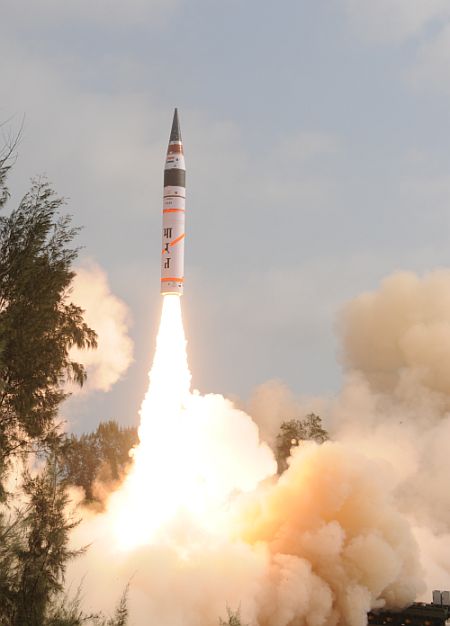
The year 2012 saw India's war machinery notching up new milestones.
Rediff.com takes a look at how India bolstered its defence preparedness this year.
Let's begin with the Agni-V missile.
India proudly entered the exclusive club as the sixth country on April 19, 2012, when its Long-Range Ballistic Missile -- Agni-V -- took to sky on its maiden flight and reached the pre-designated target point over 5000 km away in the Indian Ocean with remarkable accuracy.
The missile, which was launched from Wheeler Island off Orissa Coast, incorporates many indigenously developed technologies.
These include the composite rocket motor, state-of-the-art avionics, 5th generation 'On Board Computer' distributed architecture, highly-accurate ring laser gyro-based inertial navigation system (RINS), reliable redundant micro navigation system and the re-entry kit shield that withstands temperature with more than 4000 degree Celsius ensuring that avionics function normally by maintaining an inside temperature less than 50 degrees Celsius.
Click on NEXT to go further...
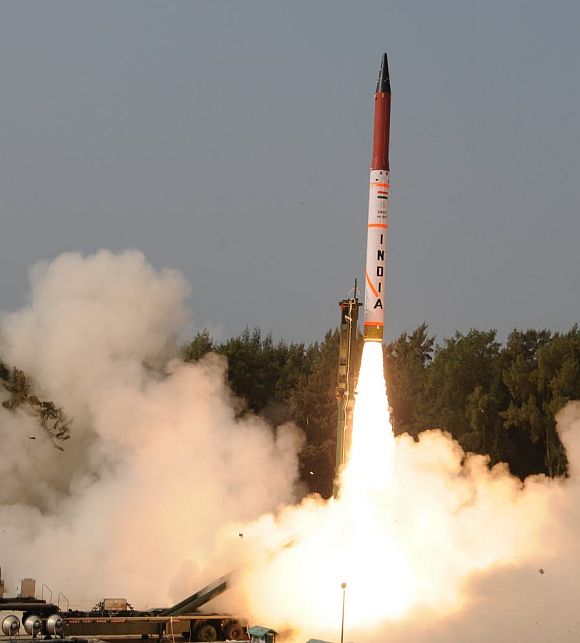
The 4000 km range nuclear capable ballistic missile Agni-IV was successfully flight tested on September 19, 2012.
The long-range missile propelled by composite rocket motor technology was tested for its cool capability.
Launched from road mobile launcher, it reached the predefined target in about 20 minutes.
Click on NEXT to go further...
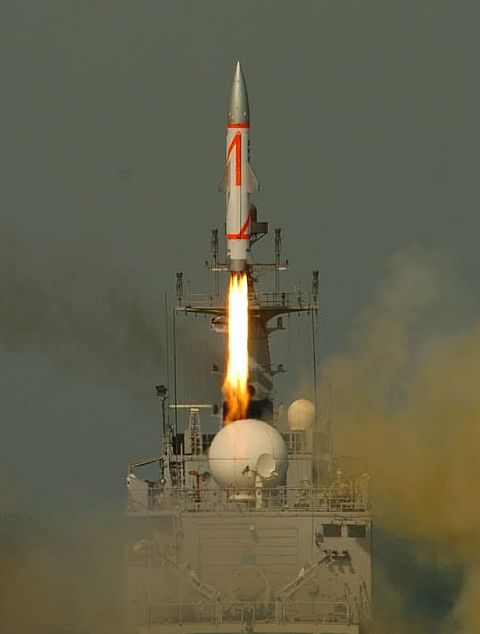
With Agni-I, Agni-II, Agni-III and Prithvi P-II surface-to-surface missile and also its naval version, Dhanush already in the arsenal of the Indian armed forces, the missile from the production lots were flight tested by the armed forces as part of training exercises to ensure defence preparedness.
Agni-I, India's 700 km-range ballistic missile had its flight tests on July 13 and December 12.
The 2000 km-range ballistic missile Agni-II and Agni-III with a range of 3000 km were test fired on August 9 and September 21 respectively.
The 350 km range surface-to-surface strategic missile Prithvi (P-II) was successfully flight tested on August 26 and October 4 from ITR Chandipur, Odisha.
Dhanush, the naval version of the Prithvi missile, was test fired from a ship off the coast of Balasore, Odisha on October 5.
Brah-Mos Block III version with advanced guidance algorithm was flight tested on March 28 from ITR, Balasore. The missile flew through the designated 290 km distance at Mach 2.8 and achieved high precision with steep dive
Click on NEXT to go further....

The Defence Research and Development Organisation developed a two-layer Ballistic Missile Defence capability against missiles with range upto 2000 km class.
Both the exo and endo atmospheric interception have been demonstrated with direct hits leading to disintegration of target missile.
The Interceptor Missile AAD launched by the Scientists of DRDO on November 23 from Wheeler's Island, Odisha, successfully destroyed the incoming ballistic missile at an altitude of 15 Km.
The target missile, a modified version of Prithvi, mimicking the enemy's ballistic missile, was launched from launch complex III, Chandipur.
A long-range radar located far away could detect the missile from take-off and tracked it through its entire path. The total trajectory of the incoming missile was continuously estimated by the guidance computer and subsequently the AAD Missile was launched at an appropriate time to counter and kill the ballistic missile.
Click on NEXT to go further...
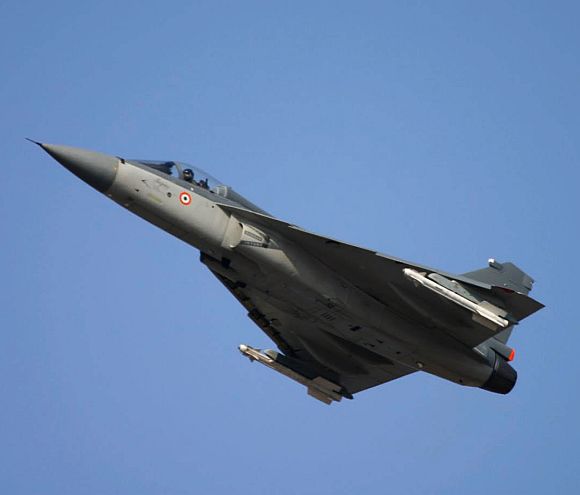
The LCA-Navy had its first flight on April 27 followed by flights during month of June/July 2012.
Initial Operation Clearance of this aircraft is expected by December 2014.
The country's first indigenous light combat aircraft with four variants (air force, Navy and their trainer versions), is a precision weapon launch platform to carry a range of air-to-air missile, unguided rockets and bombs.
The aircraft is integrated with advanced cockpit, digital avionics and weapons interface, to provide effective point and shoot capability with quick turnaround time.
A Shore-based Test facility -- one of its kind in Asia and third in the world -- developed by DRDO at Naval Air Station INS Hansa, Goa is now ready for use. Besides testing of LCA-Navy, the test facility will also be used for training of pilots on LCA -- Navy and the MiG29K aircraft.
Click on NEXT to go further...
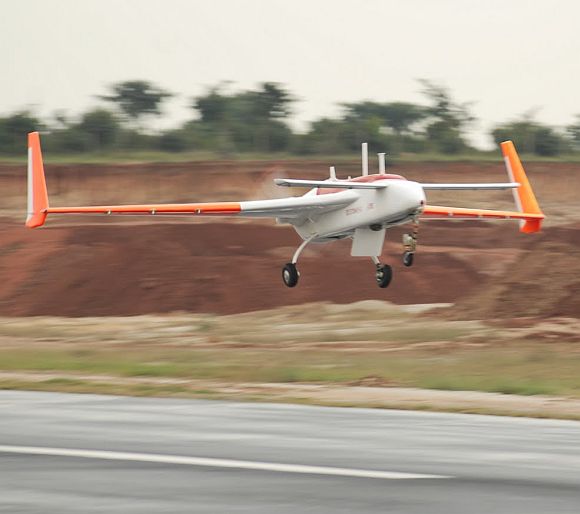
India made significant achievements in the field of UAVs this year.
Nishant and its ground control system has been made ready for the Army after confirmatory trials. An indigenous Wankel rotary engine has been developed by DRDO jointly with NAL, Bangalore, for powering UAVs like Nishant. Rotary engine technology, especially suited for such applications, is the first of its kind in India.
Orders for Lakshya II pilotless target aircraft -- capable of flying in sea skimming mode and tree top heights -- are expected from the Services after successful demonstration to them.
A forerunner to Medium Altitude Long Range (MALE) UAV, Rustom-2 had series of successful trials. Also tested was the indigenously designed and developed RUSTOM-1. This UAV has the potential to be used for military missions like reconnaissance, surveillance, target acquisition, target designation, communications relay, battle damage assessment and signal intelligence.
Netra, a mini UAV especially suited for low intensity conflict operations, was inducted by the Central Reserve Police Force. Netra has four high-speed propellers allowing it to take off and land vertically. Similarly a fixed wing mini UAV for low intensity conflict was demonstrated to security forces at various locations for surveillance within the range of 10 km. It is also useful in reconnaissance over hills.
Click on NEXT to go further...
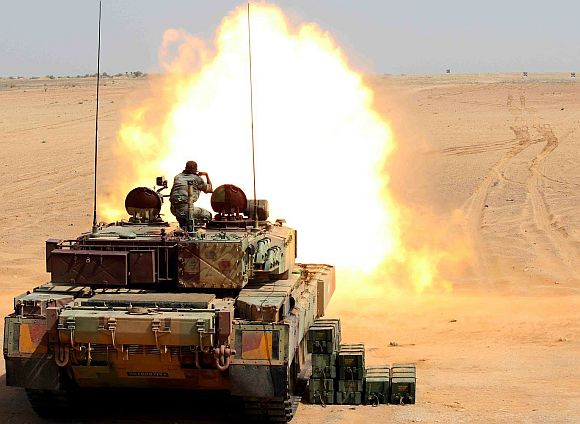
Arjun Mk-II, the advanced version of India's first main battle tank Arjun, commenced its user trials in record time of two years.
The Arjun Mk-II incorporates 89 improvements over the Arjun Mk-I, of which, two regiments are already in service.
Click on NEXT to go further...
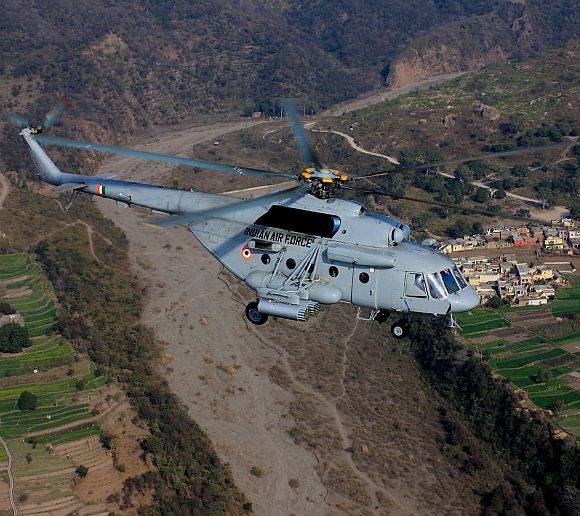
The Mi-17 V5 helicopter was inducted into the Indian Air Force on February 17.
This helicopter falls in the category of the armed helicopter with a substantial firepower and more powerful engines that will greatly enhance its payload carriage capability at higher altitudes.
Mi-17 V5, an upgrade of Mi-17 in the medium-lift category, is equipped with state-of-the-art avionics and on-board navigation systems.
It is a glass cockpit variant; the first of its kind to get inducted into the IAF.
It has onboard weather radar, state-of-the-art auto-pilot and is compatible with the latest Generation (Gen-III) night-vision goggles.
With this, the helicopter can undertake all-weather, day and night operations in any kind of terrain.
Click on NEXT to go further....
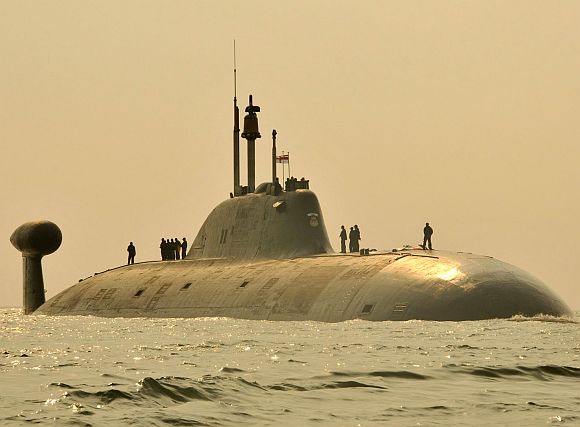
Indian Navy inducted INS Chakra to its under-water fleet on April 4 at Vishakhapatnam.
Defence Minister A K Antony inducted the submarine into the fleet of Eastern Naval Command.
This four-plus generation Russian-origin submarine is capable of fulfilling multiple roles and will go a long way in strengthening Navy's blue water operating capability.
Click on NEXT to go further...
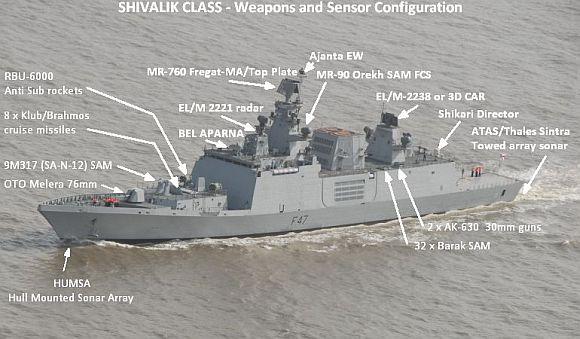
INS Sahyadri, the third of the follow-on class indigenous stealth frigate, was commissioned on July 21 at Mazagaon Dock Limited, Mumbai.
Conceived and designed by Indian Navy design team, this Shivalik class frigate will be mainstay frigate of the Navy in the 21st Century.
Click on NEXT to go further...

INS Teg and Tarkash, the first and second of the three Talwar-class stealth frigates constructed at Yantar Shipyard, Kalinigrad, Russia, were inducted into Indian Navy on April 27 and November 9 respectively.
These multi-role stealth frigate with advanced combat suits are fitted with formidable array of weapons and sensors onboard the ship, including the super-sonic BrahMos missile system and advanced surface-to-air missile system.
Click on NEXT to go further...
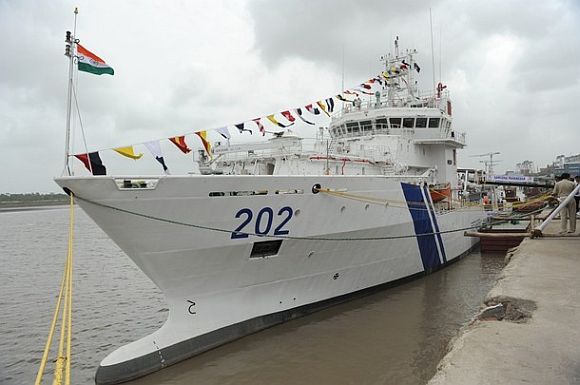
Indian Coast Guard Ship Samudra Paheredar, the second of the series of three Pollution Control Vessels being built by M/s ABG Shipyard, Surat was commissioned in July 2012.
The 95m-long indigenous PCV displaces 4300 tons and can achieve a maximum speed of 20.5 knots with an endurance of 6500 nautical miles.
The ship's primary role is pollution response at sea and is equipped with the most advanced and sophisticated pollution response and control equipment for mitigating oil spills, which include containment equipment like hi-sprint booms and river booms, recovery devices like skimmers and side sweeping arms.
The ship is capable of unhindered oil recovery operations with storage tank capacity of 500 KL in addition to inflatable barges.
Click on NEXT to go further...
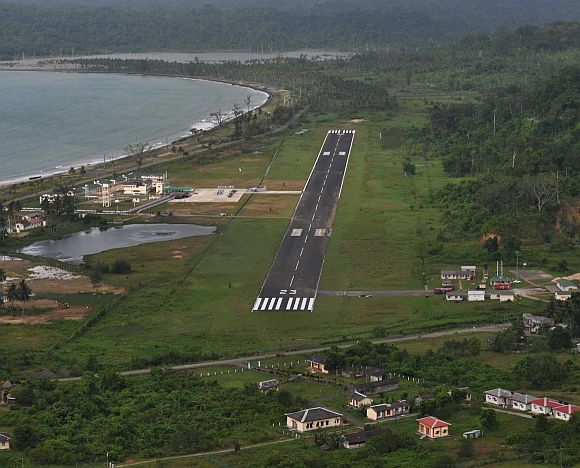
Naval base INS Dweep Rakshak was commissioned in Lakshadweep Islands and INS Baaz was commissioned in Andaman Islands (Campbell Bay) in 2012.
Commissioning of these full-fledged naval bases was another milestone in the commitment of Indian Navy in maintaining effective coastal surveillance and defence capability.
The positioning of radar stations and other surveillance measures will add positive control over movement of ships and intelligence gathering.
Click on NEXT to go further...
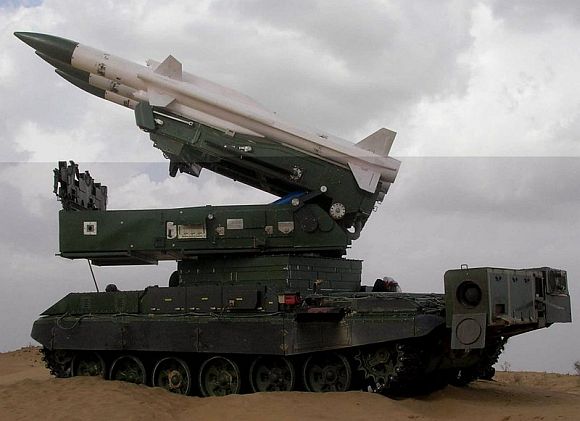
Induction and production of Akash, the medium range air defence system with multi-target, multi-directional capability is another shining achievement.
The production value of Akash missile systems ordered by Army and Air Force is over Rs 23,000 crore.
Orders for two Army regiments and six IAF squadrons are under execution.
Click on MORE to see another YEAR-END SPECIAL